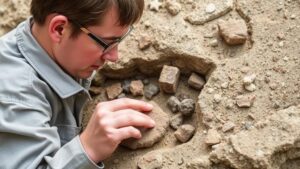Researching Religious Pilgrimage Sites for Lost Relics
Researching Religious Pilgrimage Sites for Lost Relics
The phenomenon of religious pilgrimage has held significance across various cultures and faiths for centuries. Pilgrimages represent a journey of faith and dedication, and they often involve the pursuit of sacred relics–objects of religious importance believed to have originated from a saint or have been involved in significant historical events. This article delves into the methodologies for researching religious pilgrimage sites focusing on lost relics, their historical context, and implications in contemporary society.
The Historical Context of Relics
Relics, divided generally into first-class (remains of saints), second-class (personal belongings), and third-class (items touched by the saints), have played a critical role in fostering devotion among believers. often become central to pilgrimage sites, attracting followers seeking spiritual connection and miraculous intervention. Historical examples include the relics of St. Peter located in Vatican City and the remains of St. James at Santiago de Compostela, Spain.
Documented in the History of Pilgrimages by Edward Robinson (1841), the phenomenon escalated during the Middle Ages, coinciding with a surge in Christianitys influence. This period saw the establishment of many pilgrimage sites, often corresponding with significant relics. For example, during the 11th century, the Crusades led to the retrieval and subsequent loss of numerous relics as they were taken to Europe and later lost during various wars and conflicts.
Methodologies for Research
Researching lost relics within pilgrimage contexts necessitates a multidisciplinary approach involving historical archaeology, religious studies, and anthropology. Here are several critical methodologies:
- Historical Analysis: This includes reviewing historical texts, accounts, and documents to trace the origins, movement, and importance of relics.
- Field Excavations: Archaeological work helps in unearthing potential sites where relics might have been interred or lost, such as abandoned monasteries or churches.
- Oral Histories: Engaging with local communities and religious leaders can provide anecdotal evidence and insights that may not have been recorded in written form.
- Digital Humanities: The use of technologies such as Geographic Information Systems (GIS) can map historical pilgrimage routes and identify areas of interest based on relic recovery.
Case Studies: Lost Relics and Pilgrimage Sites
Several noted pilgrimage sites have become focal points for researchers investigating lost relics. These cases demonstrate the methodologies applied in practice.
One notable example is the relics of St. Nicholas, believed to have been originally housed in Myra (modern-day Turkey) and later moved to Bari, Italy, in 1087. Archaeological research led to the discovery of remnants that aligned with historical texts, revealing insights into how relics were revered and protected within the context of both Byzantine and Roman Catholic traditions.
Another significant site is the alleged burial place of the Lost Twelve Apostles relics in Scotland. Research initiated in 2014 by the University of Edinburgh unearthed evidence supporting long-held beliefs about their burial locations. The use of modern excavation techniques and analysis of historical documents facilitated a better understanding of their importance.
Current Implications of Research on Lost Relics
The study of religious pilgrimage sites and lost relics has broader implications beyond historical curiosity. It impacts current religious practices, tourism, and cultural heritage. Pilgrimage sites serve as vital components of local economies, attracting tourists for spiritual experiences, which often leads to the preservation of these historical sites.
Plus, contemporary pilgrims engage in a search for authenticity in their spiritual journeys, making the understanding of relics paramount. Surveys indicate that approximately 40% of pilgrims seek personal connection rooted in the authenticity of relics, as highlighted in the findings of the Pew Research Centers 2020 report on religious experiences.
Conclusion and Actionable Takeaways
The research surrounding religious pilgrimage sites and lost relics offers a rich tapestry of historical context, methodological approaches, and profound implications in contemporary practices. Scholars and practitioners alike should strive to:
- Engage in interdisciplinary collaboration to enhance the depth and breadth of research.
- Use both traditional methods and innovative technologies to uncover lost relics and pilgrimage histories.
- Consider the socio-economic impact of pilgrimage sites on local communities, aiming for sustainable practices.
By expanding the nuances of understanding relics and pilgrimage sites, we can foster a deeper appreciation for their integral role in religious practices and cultural heritage worldwide.



